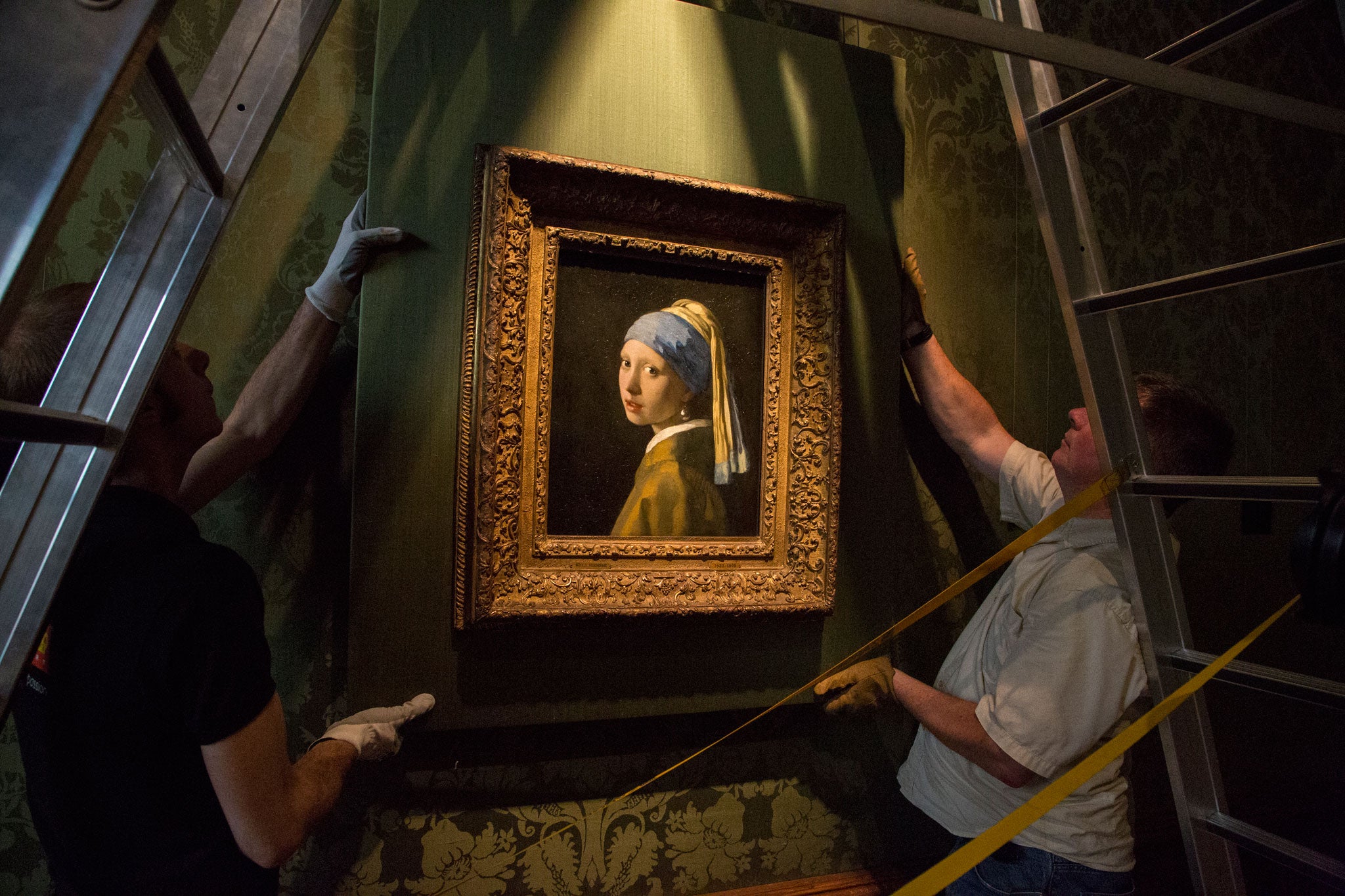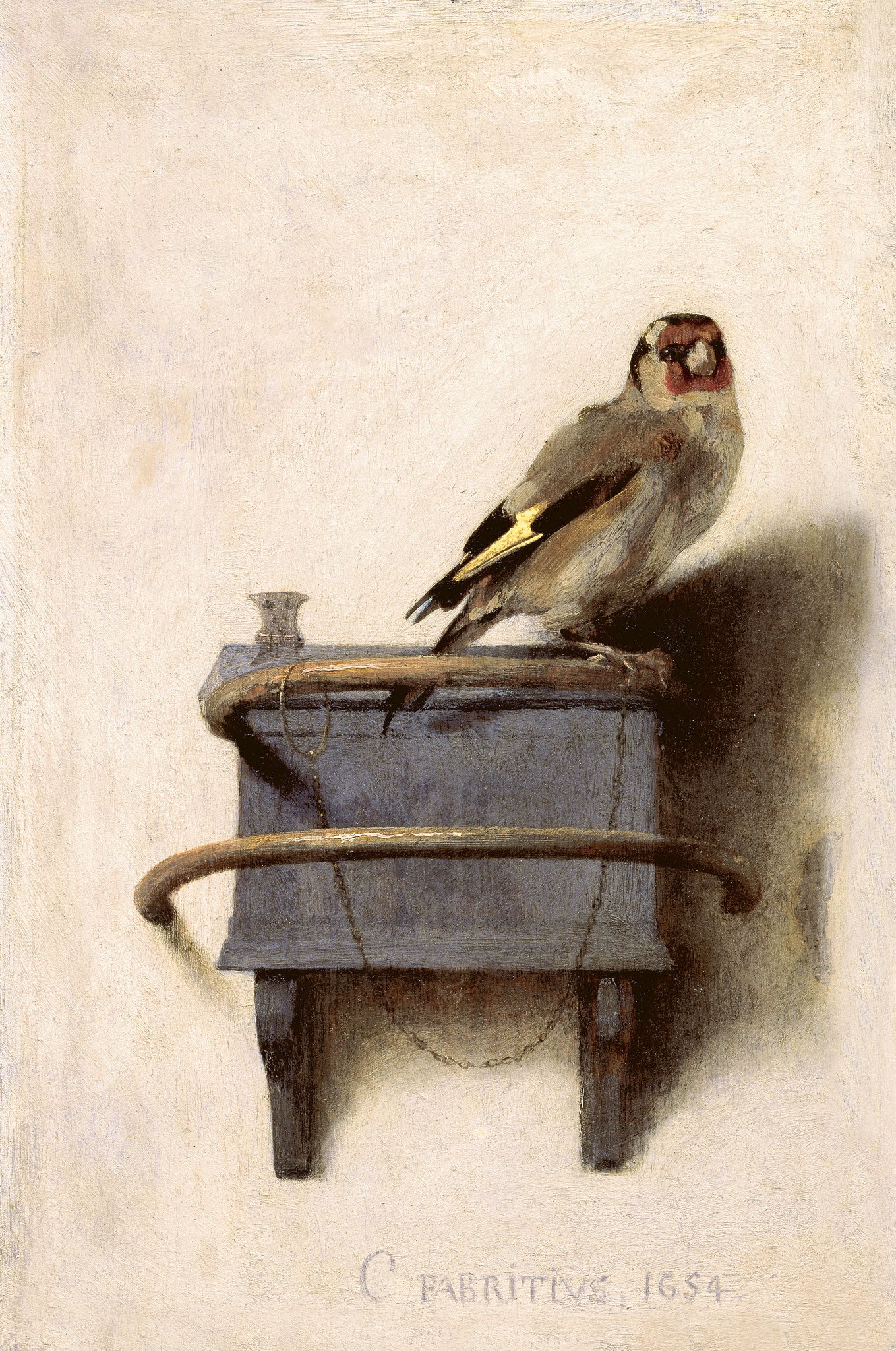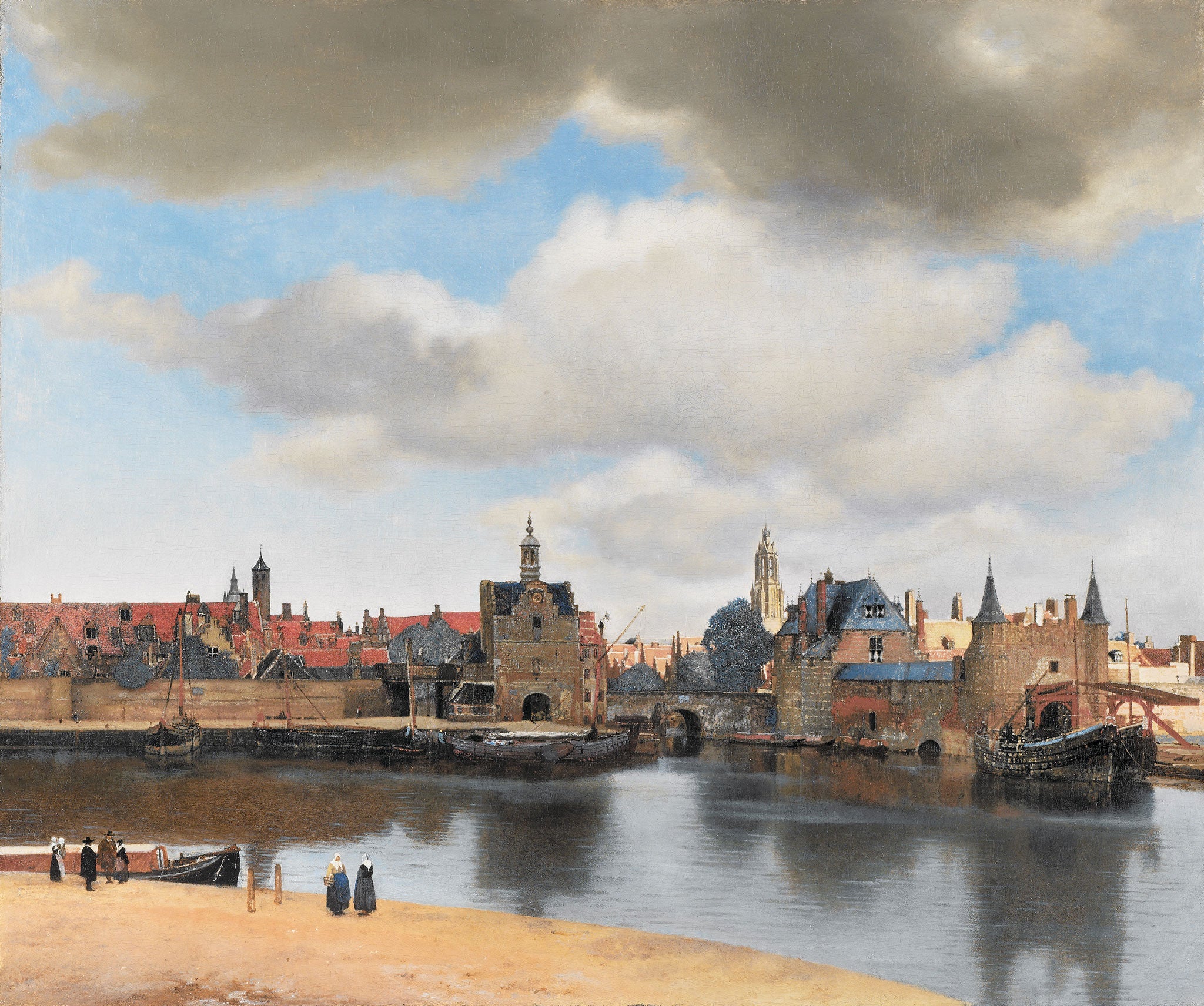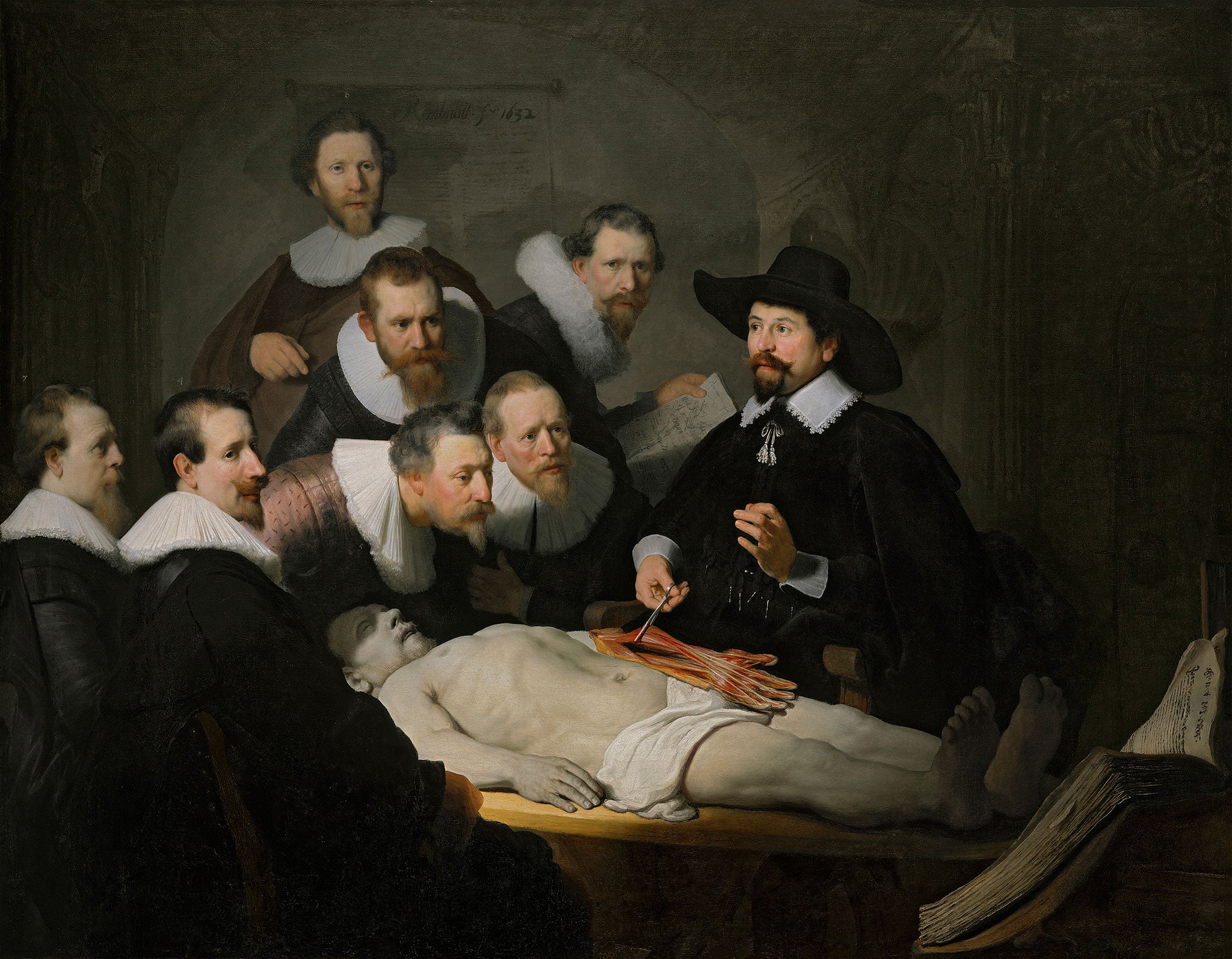The Golden Age of Dutch art has inspired writers from Marcel Proust to Donna Tartt
Just as Tracy Chevalier pilfered Vermeer's 'Girl with a Pearl Earring' and Proust purloined the artist's 'View of Delft', so Donna Tartt appropriated Fabritius's 'The Goldfinch' – set to be Booker-longlisted this week – as her inspiration. But what is it about the Golden Age of Dutch art that so enthrals novelists? Boyd Tonkin travels to the Mauritshuis museum, home to these three masterpieces and many more, to see for himself

Blessed are the latecomers. By a couple of days, I missed the official press unveiling of the restored Mauritshuis, the treasure-crammed "jewel-box" of an art museum in The Hague that houses the Dutch royal picture collection. So, after the media crowd had left but before the gallery opened its doors to the public, I was allowed to sit in Room 15 for as long as I liked, almost alone. Outside, around the town lake and beside the 17th-century courts and mansions of the seat of the Netherlands government, orange-clad cafés geared up for another Holland World Cup game. Inside, in room after masterpiece-crammed room, time stopped – and the paintings began to whisper their tantalising stories.
On one wall, between Gerard ter Borch's Woman Writing a Letter and Hunting for Lice, Vermeer's Girl with a Pearl Earring forever turns an enigmatic gaze on the spectator. Across the room, the same artist's View of Delft captures for all eternity his home city in 1660 or 1661, bathed in fitful sunshine after a passing shower. Next door in Room 14, re-positioned between windows in honour of its new-found celebrity, hangs The Goldfinch by Carel Fabritius, the Delft-based pupil of Rembrandt and perhaps a teacher of Vermeer.
I was more fortunate than Tracy Chevalier. Although the novelist had kept a poster of Girl with a Pearl Earring on her wall since the age of 19, she only caught her in the flesh here at a Vermeer exhibition in the mid-1990s. "These are paintings that need a calm empty room to be appreciated in," she later said. "You were lucky if you had three seconds in front of a painting before you were shoved out of the way by another visitor." Even so, that brief encounter incubated the bestseller that, after its release its 1999, helped to make this ever-elusive canvas one of the best known of all Dutch paintings.
The "girl" had starred in fiction at least once before. In Russell Hoban's The Medusa Frequency (1987), a stalled writer travels to the Mauritshuis to see her – only to find that she has moved to a temporary show abroad.
As for Fabritius's quizzical bird, it entered the fiction charts – via Donna Tartt's The Goldfinch – thanks to a sojourn in New York. Tartt's novel turns on the (imaginary) theft of the picture after a terrorist bombing at the Met, and pivots its reflections of art and life around the secrets of this gnomic painting. It has already won the Pulitzer Prize for fiction – and now it looks like a strong contender for the Man Booker Prize longlist, due on Wednesday in the first year of eligibility for American works.

Yet no tale spun around the masterworks of the Mauritshuis can match in literary gravitas the fictional afterlife of Vermeer's View of Delft. For Marcel Proust, who saw it first in the Hague in 1902, and again in 1921 when it visited the Jeu de Paume in Paris, this cityscape of buildings irradiated by an ever-changing light was simply "the most beautiful painting in the world". Across the epic length of his A la recherche du temps perdu, it recurs as a touchstone and talisman of art's perfection – and art's mystery.
Remarkably, for a gallery that displays only 260 works, the contribution of the Mauritshuis to literature does not end there. The American writer Nina Siegal has just published a novel prompted by The Anatomy Lesson of Dr Nicolaes Tulp – the youthful masterpiece of 1632 found in the Hague's dazzling cluster of first-rate Rembrandts. And downstairs, Holbein's portraits of Jane Seymour and of the cruelly handsome Robert Cheseman, Henry VIII's master falconer, plunge the imaginative viewer straight into the milieu of Hilary Mantel's Wolf Hall and Bring Up the Bodies.
This inspirational gallery has re-opened after a two-year, €30m refit. A new underground foyer connects the neat waterside palace – built around 1640 for the former governor of Brazil, Johan Maurits of Nassau-Siegen, and home of the Dutch royal collection since 1822 – to an Art Deco building across the street converted to host shows, events and a library. But the "jewel-box" ambience remains – even embellished with a state-of the-art lift that hoists you from the subterranean entrance-hall to just inside the old front door.
Director Emilie Gordenker walks me around rooms renovated with a vigilant care for period fittings and materials. "It's the perfect size as it is," she says. "We didn't want to turn it into a big museum." (The royal collection numbers some 800 works, many on show nearby at the Prince William V Gallery.) She believes the focused but secretive masterpieces of the Golden Age invite, and reward, repeat visits. "You see more and more in them; they benefit from close attention."
Save for The Goldfinch's new prominence, the star attractions of the Mauritshuis have not been fenced off in any VIP enclosure. "People said, 'Don't you want to put the Girl with a Pearl Earring on her own?' No: you see her surrounded by the very high quality of the other paintings."
Does Dr Gordenker, who curated Dutch and Flemish art at the National Gallery of Scotland, before coming here in 2008, have any personal favourite? "It's like asking a mother about her k favourite children!" In her guide to highlights of the Mauritshuis, though, she does write that if "forced to choose", it would be View of Delft.

Writers of fiction have woven yarns around the lives of artists, real or imaginary, since as early as 1831, when Balzac re-invented the young Poussin in The Unknown Masterpiece. From Somerset Maugham channelling Gauguin in The Moon and Sixpence to Irving Stone's semi-documentary heroics in Lust for Life (Van Gogh) and The Agony and the Ecstasy (Michelangelo), the results have spanned the sublime and the faintly ridiculous. Frida Kahlo and Diego Rivera appear in Barbara Kingsolver's Orange Prize-winning The Lacuna. Orhan Pamuk's My Name is Red, with its richly tinted evocations of Ottoman court painting in the 16th century, shows that the genre can adapt to fit a variety of frames.
At the Mauritshuis, the proximity of so many story-spinning canvases prompts a different sort of question about the traffic between prose and picture. Here, the broad sweep of the bio-novel takes second place to the ellipses and enigmas of individual works. For all the heavyweight scholarship devoted to symbolism and allegory in paintings of the Dutch Golden Age, the mystery of these frozen moments continues to haunt viewer and story-teller alike. True, Chevalier's novel does in its oblique way, via the voice of the maid Griet, observe the life of Vermeer and his household in Delft; more importantly, it captures, scene by scene and gesture by gesture, the episodes, emotions and secrets hinted at by that outlandish jewel glinting at the servant's (if she is a servant) ear.
The paintings from this place and time seem to serve as uniquely combustible firelighters of narrative. As Chevalier has said about the Girl's almost startled sideways glance, "It's the kind of expression you can interpret in different ways depending on your mood." The writer, she has argued, may stretch the passing glimpse into a plot and colour in the vacant temporal background: "A painting is about a moment, a book is about a sweep of time – be it 100 years or a day or an hour, it is still about what changes between the beginning and the end of the story."
The biographical canvas of Carel Fabritius is nearly as blank as the plain rough-cast wall behind his finch. To Donna Tartt, this picture tells a story not about the artist but about art itself. Its thick brushstrokes both make and break the illusion of reality, allowing us to experience both the subject and the artist's technique in the same moment. As her bereaved young hero Theo puts it, "you see the mark, the paint for the paint, but also the living bird". Fabritius's artwork functions both as "the thing and not the thing", a sacred sign of that "slide of transubstantiation where paint is paint but also feather and bone". So the bird sings the magic of creation.
In Tartt's book, the meaning of the painting entwines with the death of Theo's mother and his long journey though grief. In Dutch Golden Age art as a whole, the vivid snapshots of life are often pregnant with an awareness of mortality. With their skulls and maggots, their blown roses and rotting fruits, these paintings swarm with every sort of memento mori to recall the transience of our days – and our loves. And the novelist, perhaps unlike the painter, can not only hint at but also describe the story's end.

In The Captive, the fifth volume of A la recherche du temps perdu, Proust's obsessional admiration for View of Delft reaches its climax. The writer Bergotte has long wanted to revisit not only Vermeer's painting but one small corner of it, "a little patch of yellow wall" which "was so well painted that it was, if one looked at it by itself, like some priceless specimen of Chinese art, of a beauty that was sufficient in itself". Critics and biographers argue over the fragment Proust had in mind; yellow patches lie on both sides of Vermeer's Rotterdam Gate.
Already sick, Bergotte hauls himself (as Proust did in 1921) to the Jeu de Paume, where he sees the Vermeer – then dies, of a stroke. In his final revelation, "the precious substance of the tiny patch of yellow wall" comes to stand not only for the sublimity of the greatest art but the purpose of life itself. It appears to the dying Bergotte like a coded signal from a better world, "based on kindness, scrupulousness, self-sacrifice, a world entirely different from this one and which we leave in order to be born on this earth, before perhaps returning there to live once again".
The yellow wall – or, perhaps, the meaning of life – is in Room 15 of the Mauritshuis. The girl with a pearl looks straight at it. Next door, a goldfinch chirrups silently and unfathomably on its perch. A few metres away, seven medical students crowd around Dr Tulp's pallid cadaver, each pointy-bearded face bristling with ambitious life. Three centuries and more ago, every one of those lives ended with one more chalk-white corpse.
Even though I had the chance to wander through an almost-silent gallery, the stories stacked inside the Mauritshuis could deafen you; the seam of fictional transformation from Proust to Chevalier, Tartt and Siegal is far from exhausted. Among the plentiful great Rembrandts in this gallery, you will find his haunting Two Moors from 1661: a pair of Africans, one defiant, the other subdued, the spectrum of feeling on their faces seeming to express the span of experience available to alien newcomers in the Holland of the Golden Age. Who will write their story?
The Mauritshuis Royal Picture Gallery (mauritshuis.nl), Plein 29, 2511 CS The Hague, is open daily until 1 November, then Tuesday to Sunday
Join our commenting forum
Join thought-provoking conversations, follow other Independent readers and see their replies
Comments